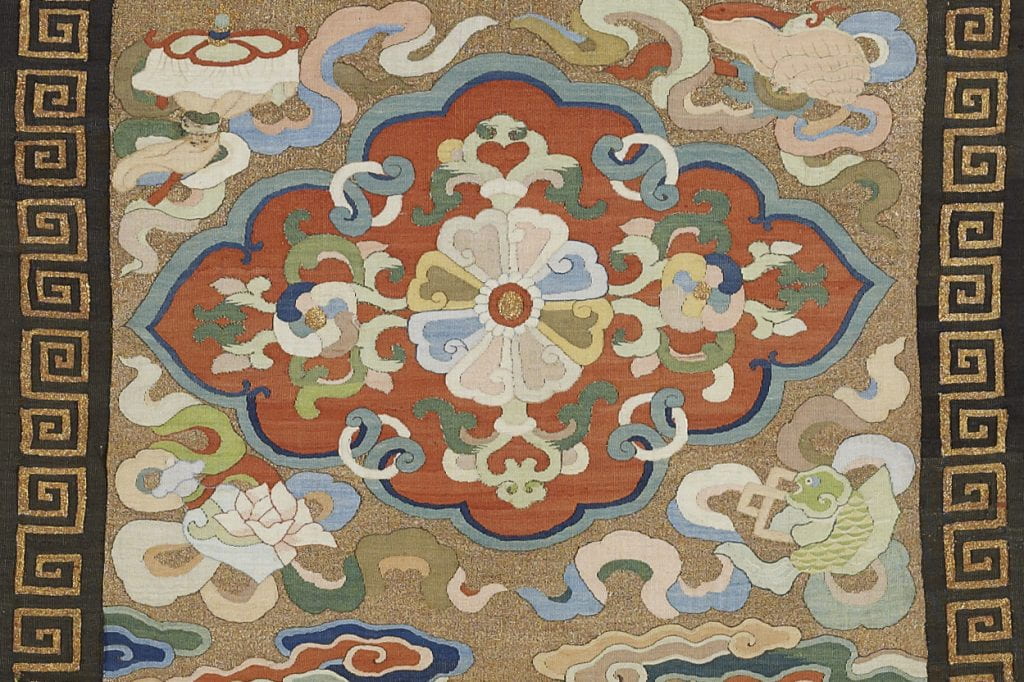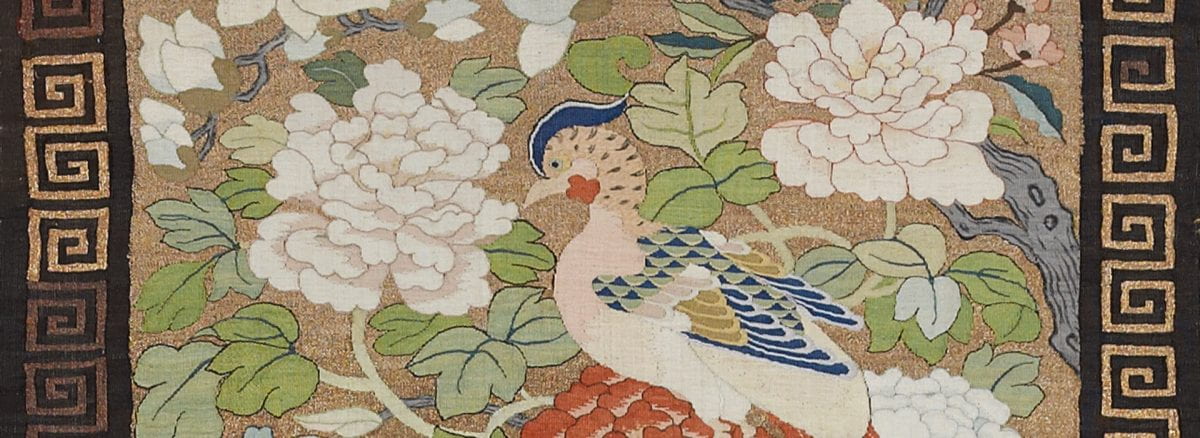China’s Qing Dynasty flourished during the reign of the Kangxi Emperor: The empire expanded, and the arts thrived. During this period, the most coveted job for an educated man was a position in the imperial government. Civil service jobs were rooted in a rigorous exam system based on Confucius thought, and were comprised of nine ranks, each symbolized by a bird.

This exquisite silk cover was probably commissioned by a second-rank officer to adorn a wooden armchair in his home. The design features two golden pheasants — the symbol of the second civil service rank — together with a host of auspicious symbols.

The top of the textile, which hung over the chair back as an anchor, includes the Chinese shou symbol and peach blossoms for longevity, and clouds for perpetual youth. On the back of the chair, pheasants mingle with peony and magnolia blossoms to represent wealth, good fortune and prosperity. Covering the seat are four of the eight Buddhist treasures: a conch shell, fish, parasol and lotus flower. Hanging down in front of the chair legs, the bottom of the textile depicts a dragon with four claws and ocean waves that represent the sea as the source of all life.

This chair cover is thin, delicate, finely woven and includes metal-wrapped yarns — indicating that it was made for an important occasion, not for relaxing or comfort. The officer who owned it likely prized this cover among his most valuable possessions.


